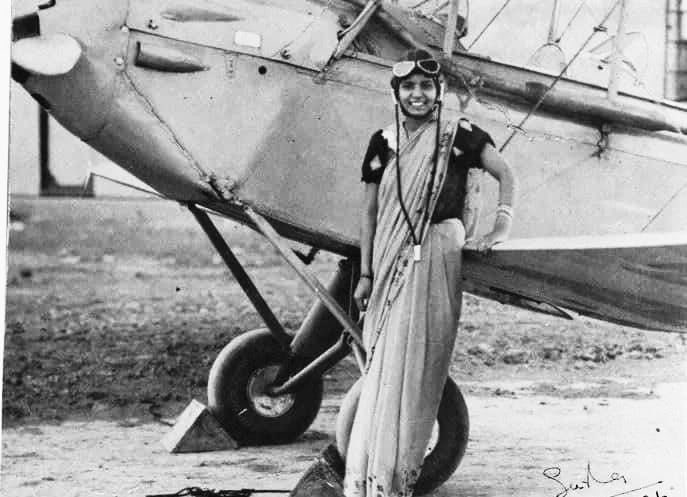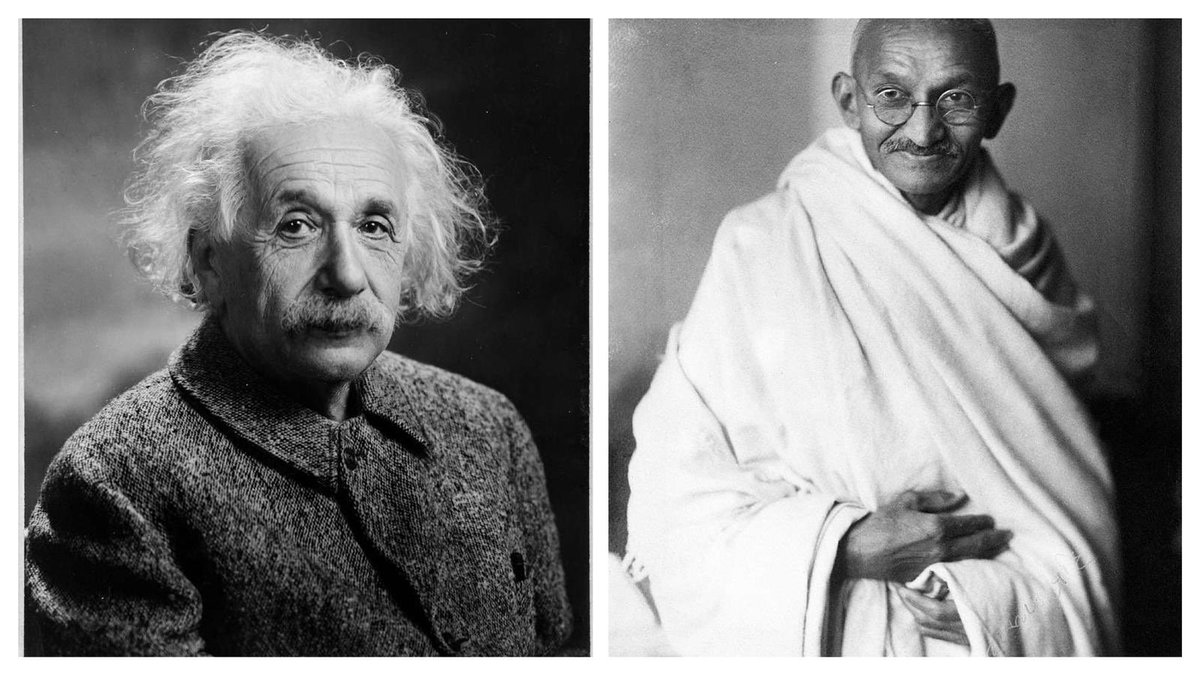
A day to reminisce about a peculiar sight of a different time, an Indian woman in Sari, flying an aircraft during the pre-independence era.
A thread on Sari, Aircraft, Besharmi and a trailblazing mother, Sarla Thakral. (1/n)
A thread on Sari, Aircraft, Besharmi and a trailblazing mother, Sarla Thakral. (1/n)

When Sarla was married to Prabhu Dutt Sharma and moved to Lahore, she was merely 16. It was a family with a rich heritage of aviation heroics. Captain Sharma himself was a decorated pilot who flew with Nehru for his first election tour circa 1937. (2/n)
Her father-in-law owned a company called Himalayan Airways that used to operate flights between Haridwar & Badrinath. It was mostly his enthusiasm that had his young daughter-in-law enrolled in a flying club in Lahore, for Rs. 30/hour. (3/n)
Only after 8 hours & 10 minutes of dual training, impressed by her amazing technique and confidence, her instructor Mr. Dastur authorized her to fly solo. Not to forget, Sarla was 21-year-old young then, & had a 4-year-old daughter. (4/n)
She knew she was about to make history. She embarked on DH.60G Gipsy Moth at the Lahore airport in a modest saree & flew the two-seater completely solo in 1936, which made her one of the earliest women pilots of undivided India. (5/n)
An achievement that shook the world dominated by males. Her smiling photograph in a simple georgette saree with bangles on her left hand in front of the iconic Gipsy Moth became a symbol of women empowerment. (6/n)
As she broke into the male citadel, she had to face backlashes for her choice, & it had to do with the patriarchal definition of modesty. Because of safety requirements, she had to hand over her chunni before entering the cockpit, which triggered controversy. (7/n)
Among many, Rai Bahadur Roop Chand, a future Indian ambassador to America, argued with her husband to prevent Sarla from being such a ‘besharam’ (shameless) woman & not to remove her chunni inside the cockpit. (8/n)
The dainty lady, however, never looked back, which paved the glorious path forward for many Indian women since then. When the Maharani of Alwar, advertised for a job as a female pilot, Sarla applied & got the job. (9/n)
She was about to take the license examination to become a commercial pilot, but unfortunately, she had to abandon her dream after her husband’s death in a plane crash & as WW2 broke in, flying clubs were forced to shut down. (10/n)
In the coming years she experienced the horrors of partition. She was even given a small packet of poison to consume in case all the men die. Later she moved to Delhi as a widow with young daughters and established herself as an independent painter and jewelry designer. (11/n)
When she was asked about her dream during an interview with NDTV, the 92-year-old passionately said she wishes from her heart, just like Germany did in the past, India & Pakistan would also unite one day. (12/n)
In the era when mothers were considered only fit for domestic jobs & there were just a handful of male pilots in India, the incredible Sarla Thakral (Sharma) flew over 1000 miles with nerves of steel. Today is her death anniversary. (13/n)
Acknowledgement: TheSouthAsian.com/Sanjay Austa. NDTV. India and Its Visual Cultures/Birgit Lettmann, Uwe Skoda
• • •
Missing some Tweet in this thread? You can try to
force a refresh
















